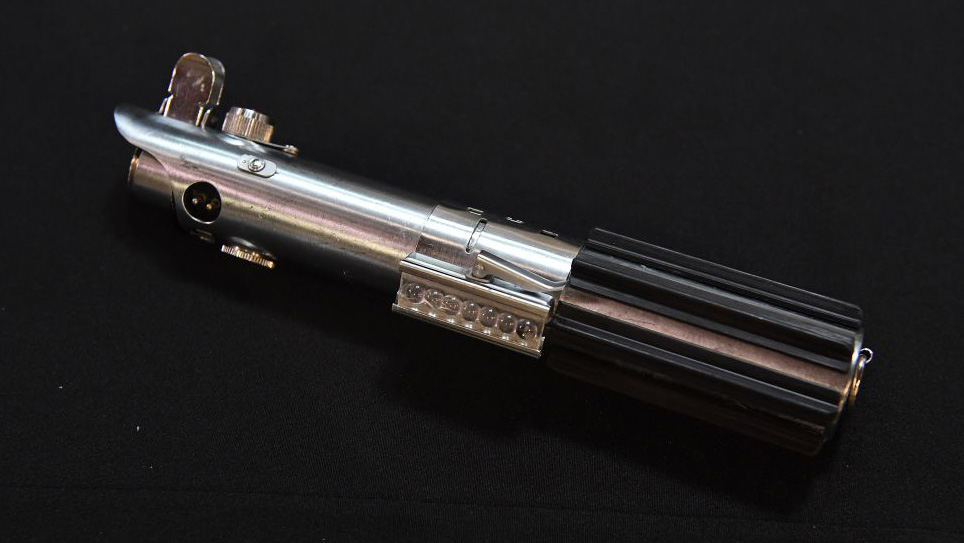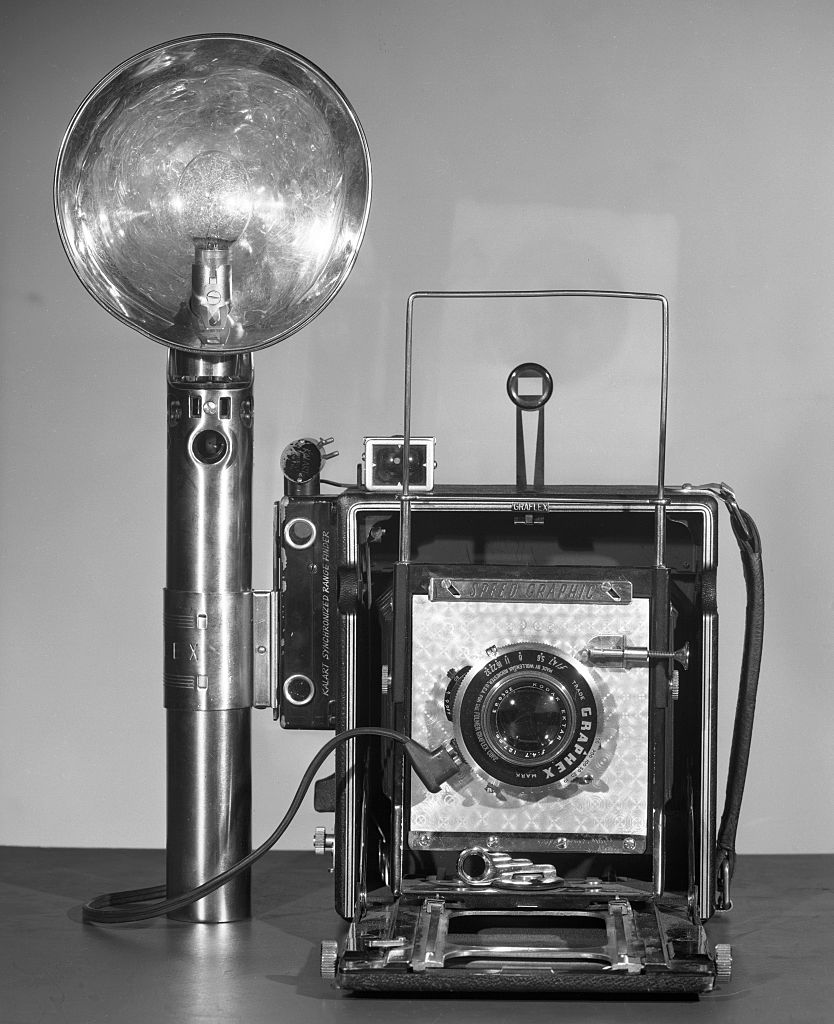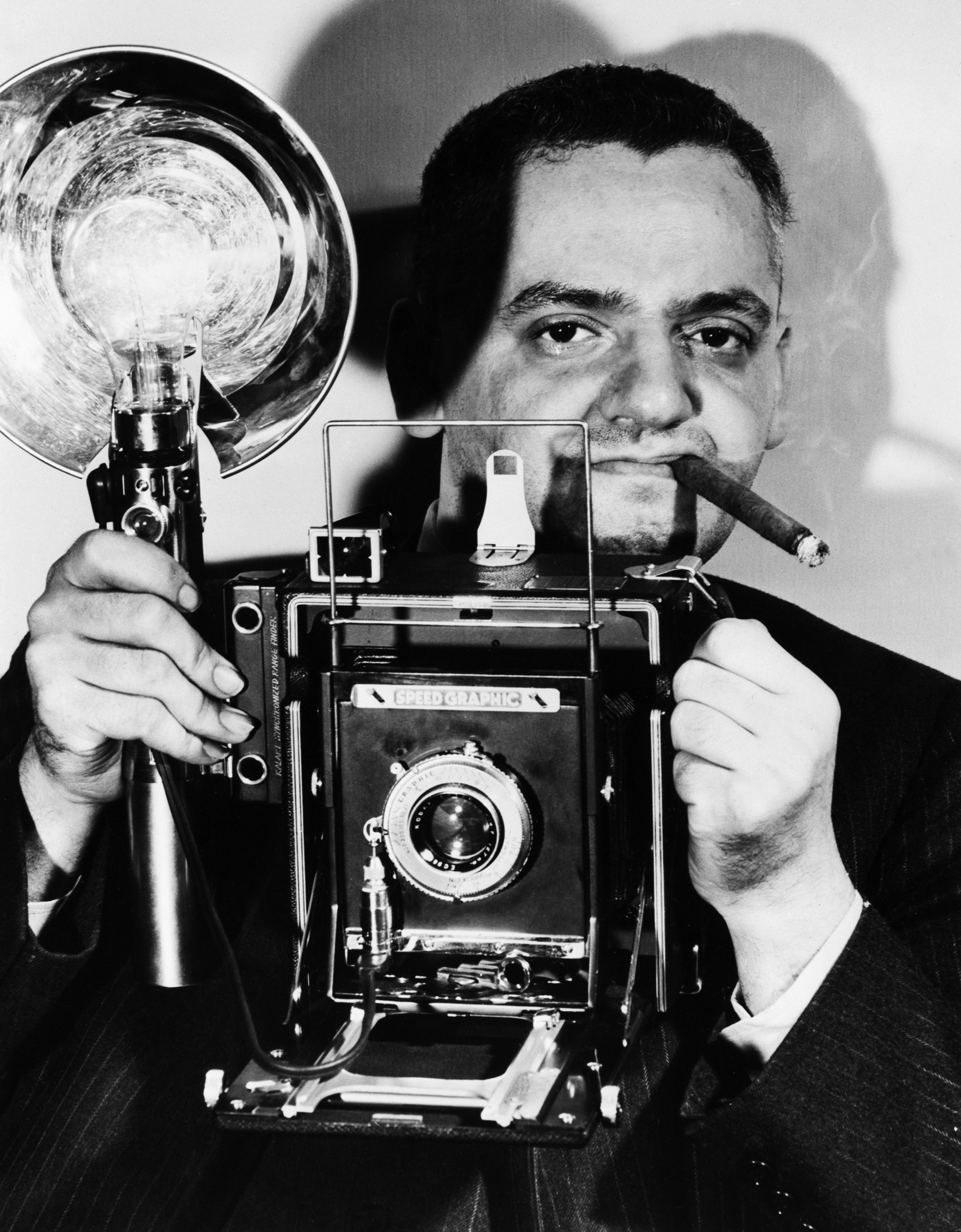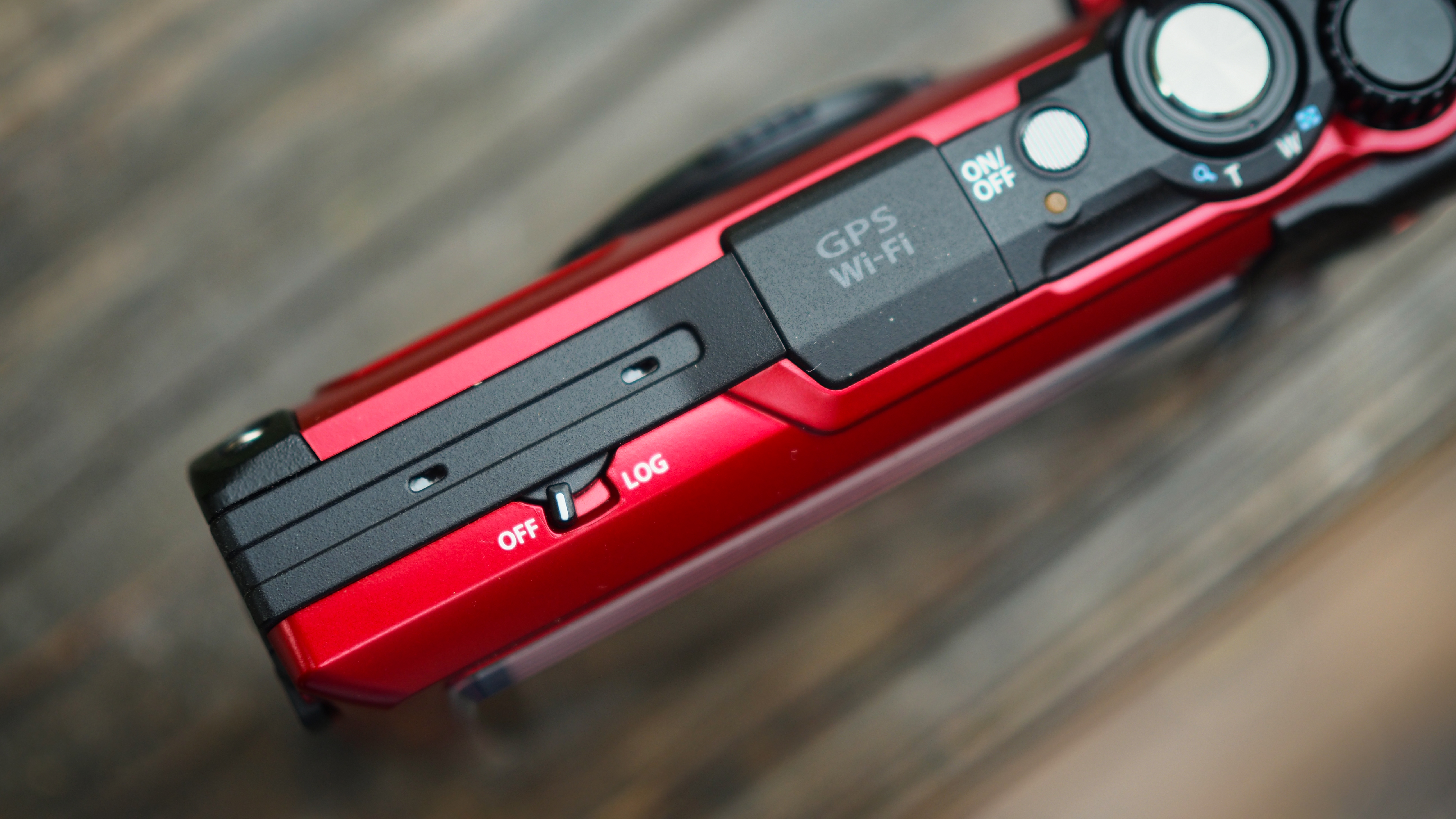I had no idea Luke Skywalker's Lightsaber was made from a vintage camera flash
This Star Wars Lightsaber is one of the most recognizable props in movie history – and its DNA comes from a vintage camera flash

It’s Star Wars Day, so forgive me if I indulge in my favorite movie franchise for a moment and inform you – to my astonishment – that a Graflex flash was used as the basis of Luke Skywalker’s Lightsaber in Episode One: A New Hope.
Well, okay, I say "basis", but if you take a look at the image below you’ll notice that the arm of the Graflex flash unit essentially is Luke’s Lightsaber. How cool is that?
Graflex was formed in New York and built large and medium format cameras between 1912 and 1973. It was best known for its Speed Graphic range, which was a favorite of press photographers like the legendary Arthur "Weegee" Fellig – one of the best photographers ever.
But it was a large flash unit that caught the eye of Star Wars production designer, Roger Christian.
According to Chiswick Auctions, Luke's hilt was built from a "1940s Graflex camera, with a 3-cell flash gun" by Roger for just $15 (about $83 / £63 / AU$129 adjused for inflation), only for the Seattle Museum of Pop Culture to dish out a whopping $250,000 ($342,000 / £258,000 / AU$531,000 in today's money) on the legendary prop in 2012.
The Star Wars faithful can even purchase a Lightsaber hilt built from a real Graflex flash from professional prop builders, with Chiswick Auctions stating: "Some workshops have even sold directly to Disney, which can retail at US$15,000" (£11,300 / AU$23,300).
It's not surprising that these flash units have become sought after by Star Wars collectors and photography collectors alike, with the former often looking to build their own faithful replica of the weapon that, in the words of old Ben Kenobi, is “not as clumsy or random as a blaster”.
The best camera deals, reviews, product advice, and unmissable photography news, direct to your inbox!
And although it might seem sacrilege, turning a piece of photography history into a Star Wars prop, I kind of want one for a Lightsaber hilt myself. Not that I have a full-size replica of Boba Fett’s helmet in my living room or anything like that…
So, there you have it. If you happen to have an old Graflex flash unit in your vintage camera collection, and you feel a disturbance in the Force, perhaps you’d better hide it.
You might also like...
Want more Star Wars Day photography content? Shoot toy photography this Star Wars Day and create a mini cinematic scene. And if you want to brush up on your Photoshop skills: Create a jump to lightspeed effect in Photoshop on Star Wars Day. And for more vintage camera stories: George Lucas' $625,000 Panavision camera: the second most expensive Star Wars item in the galaxy!

Mike studied photography at college, honing his Adobe Photoshop skills and learning to work in the studio and darkroom. After a few years writing for various publications, he headed to the ‘Big Smoke’ to work on Wex Photo Video’s award-winning content team, before transitioning back to print as Technique Editor (later Deputy Editor) on N-Photo: The Nikon Magazine.
With bylines in Digital Camera, PhotoPlus: The Canon Magazine, Practical Photography, Digital Photographer, iMore, and TechRadar, he’s a fountain of photography and consumer tech knowledge, making him a top tutor for techniques on cameras, lenses, tripods, filters, and more. His expertise extends to everything from portraits and landscapes to abstracts and architecture to wildlife and, yes, fast things going around race tracks...
You must confirm your public display name before commenting
Please logout and then login again, you will then be prompted to enter your display name.


